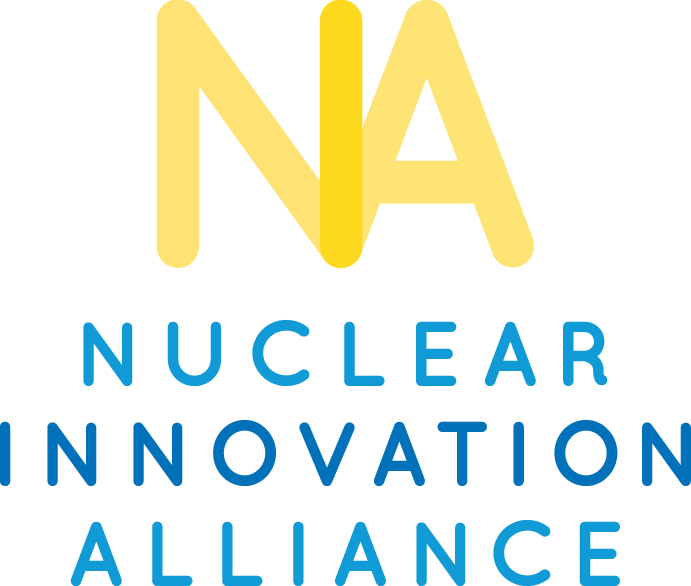
WASHINGTON, D.C. Just as existing nuclear power plants provide the bedrock for our modern clean energy infrastructure, developing the infrastructure to commercialize advanced nuclear technologies will allow the United States to finish the task of decarbonization while providing high-paying jobs. Advanced nuclear energy is critical infrastructure. U.S. investment in developing new reactor technologies is needed to unlock economic, environmental, social, and national security benefits for the United States and the world in the 21st century. By embracing policies like those laid out in NIA and PGS’ joint US Advanced Nuclear Energy Strategy, the Biden Administration and Congress can work together to meet domestic infrastructure goals and international climate commitments.
Fulfilling its campaign promises of strong climate action, the Biden Administration is proposing large, structural changes . The American Jobs Plan proposes a large infrastructure package of federal investments to restore American economic competitiveness and climate leadership. Among other provisions that would help the nuclear sector, the plan would fund demonstration projects including advanced reactors. More recently, the United States released a Nationally Determined Contribution (NDC) target under the Paris Agreement, committing the United States to a 50-52% reduction in emissions by 2030, putting the U.S. on a path to reach net zero emissions by 2050.
As acknowledged by the Biden Administration, both existing and advanced nuclear energy infrastructure have central roles in meeting these ambitious goals. Preventing retirements of existing nuclear power is a necessary step to meet the U.S. NDC target because they provide more than half of current carbon-free power generation in the U.S. Successfully developing and commercializing advanced nuclear energy is essential to the mid-century goal of net-zero emissions. The NDC recognizes the importance of developing leadership in such critical industries as advanced nuclear power. With next generation designs that can complement renewable energy, advanced reactors can support sustained decarbonization of the power sector. Advanced reactors can also decarbonize non-electric sectors by providing process heat for industry, district heating, desalination, and hydrogen production.
Given the urgency of climate change, the time to invest in infrastructure for the commercialization of next generation technologies is now. The case for nuclear energy goes beyond decarbonization as it includes substantial economic benefits. The nuclear industry provides well-paying jobs, is more unionized than other energy sectors, and employs large numbers of veterans. Nuclear power plants provide large tax bases to fund local communities. A revitalized nuclear sector can also establish the U.S. as a global leader in nuclear power exports, a position currently dominated by Russia and China.
In setting its ambitious energy transition goals, the Administration is rightly mindful of environmental justice concerns. There were historical abuses in the early development of nuclear science, primarily due to weapons activities. The modern commercial nuclear energy industry has strong performance in sustainability, and has the opportunity to work with local communities to embed environmental justice in its activities going forward. Modern mining techniques have limited environmental impacts and the air pollution avoided by nuclear energy saves thousands of lives in communities of color. Nevertheless, as we look to the future we must also address the problems of the past with policies focused on nuclear justice and bills like the American Nuclear Infrastructure Act, which funds clean up of legacy uranium mines. American-led designs are also critical to ensuring nuclear energy is a carbon-free option for emerging economies that currently suffer from widespread energy poverty and face the most severe consequences of climate change.
The ability to unlock climate mitigation and other benefits of advanced reactors is due in part to recent bipartisan legislation to restore American leadership in nuclear energy technologies. The Nuclear Energy Innovation and Modernization Act catalyzed sweeping licensing modernization at the Nuclear Regulatory Commission to ensure it stays a world leading regulator. Meanwhile the Nuclear Energy Innovation Capabilities Act established programs at the Department of Energy for advanced nuclear research, development, and demonstration. More recently, bipartisan legislators developed and passed the Energy Act of 2020, the most sweeping set of energy reforms and policies in more than a decade. The bill authorized critical programs that an infrastructure bill can fund, including federal research infrastructure and public-private demonstration projects.
Federal research infrastructure, like the National Laboratories and university system, is the foundation of American leadership in future energy technologies. National lab programs like the Gateway for Advanced Innovation in Nuclear and National Reactor Innovation Center provide a foundation for public- and private sector innovation. The Versatile Test Reactor (VTR) is essential infrastructure as it provides a fast reactor testing environment to level the playing field with Russian and Chinese competitors. The VTR can unlock nuclear designs that use fuel more efficiently, produce less waste, and are competitive in global markets. As the administration and Congress look to an infrastructure bill, maintaining and strengthening this federal research infrastructure is foundational for private sector success.
Beyond federal assets, federal funding of public-private partnerships is essential to 21st century energy infrastructure. The Department of Energy is pursuing several major demonstration projects for advanced reactor technologies. These include the Advanced Reactor Demonstration Program and a demonstration for a light water small modular reactor. Sufficient funding of these projects as part of an infrastructure package is critical to ensuring that American-made designs are commercialized in time to contribute to climate mitigation in global energy markets.
A climate-focused infrastructure package can strengthen the economy, address environmental justice, and reestablish American trade competitiveness. Advanced nuclear energy is a critical industry of the future and federal leadership can support a whole-of-society effort to unlock its benefits.